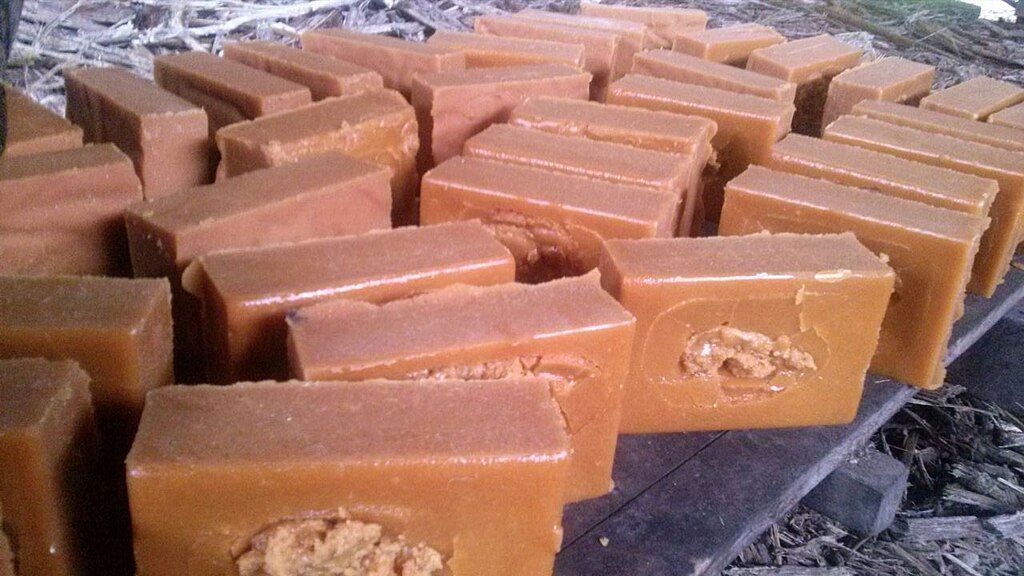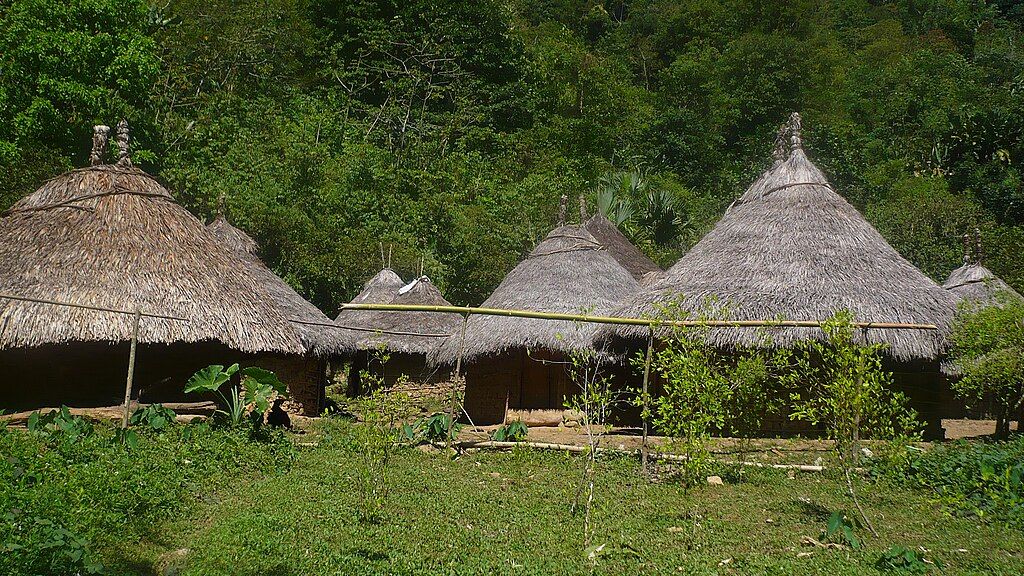Wild Panela Sugar: Here's Why It's So Expensive
In Colombia, nutrient-rich panela, with its caramel essence, is prized over white sugar. Its artisanal creation and exclusivity drive its high cost, both locally and abroad. What sets this luxury sweetener apart?

Panela, a cherished sweetener in Colombia, holds a distinctive edge over the typical refined white sugar.
This unrefined sugar retains the natural molasses from sugarcane, imparting a rich caramel undertone and preserving essential vitamins and minerals.
This luxurious sweetener can fetch prices up to $40 per kilogram in Colombia, and astonishingly, it's priced up to 20 times higher than white sugar in the US.
The artisanal process of crafting panela might be a key driver behind its premium cost.
What is Wild Panela Sugar from Sierra Nevada?
The wild panela sugar from Sierra Nevada isn't merely panela; it's a luxurious unrefined sugar, a product of sugarcane grown in the diverse Sierra Nevada region of Colombia.
This sugar retains the sugarcane's natural molasses, imbued with essential nutrients.
The Origin
In the heart of the Sierra Nevada de Santa Marta, the world's highest coastal mountain range, a distinct rendition of panela emerges, weaving a tale of nature's bounty and ancient traditions.
The unique character of this panela is shaped by the region's exceptional climate and fertile soil, giving birth to a sugarcane of unparalleled quality. At the core of this tradition are the Kogi people, one of the four indigenous tribes of Sierra Nevada.

These "Elder Brothers" of humanity have not only maintained the intricate craft of panela-making through the ages but also hold a profound belief. They assert that consuming panela imbues the body with heightened energy, a testament to its purity and vitality.
In this challenging landscape, marked by its extreme temperatures and vast expanses, the value of panela soars, outshining other sugars.
For those who truly understand the essence of luxury edibles, the panela from Sierra Nevada, especially the one touched by Kogi hands, stands as a symbol of unmatched gastronomic treasure.
Best Wild Sugarcane Variety for Panela
The indigenous people, including the Kogi from regions like Sierra Nevada in Colombia, primarily use a type of sugarcane known as White canes to produce panela.
This particular sugarcane variety is ideally suited for the artisanal production of panela due to its high sucrose content, robustness, and adaptability to the diverse Colombian terrains.
There are several specific varieties of Caña Panelera namely Pijota, Cuban, White, and Sweet canes cultivated in different regions of Colombia, depending on the local climate and soil conditions.
These varieties have been selectively bred over generations to yield the best possible juice for panela production.
Why is Wild Panela Sugar so Expensive?
Crafting Panela: A Timeless, Low-Tech Tradition
In the heart of Sierra Nevada, crafting panela stands as a testament to the harmony of man, beast, and environment.
Central to this craft is an age-old wooden mill crafted from the Nemakura tree. The mill's operation requires three skilled artisans: two feed the sugarcane while another manages the mule that drives the wooden mechanism to crush the cane.
Operating the machine demands utmost caution and precision, as even a slight misstep can lead to injuries, something many artisans have experienced firsthand.
This intricate process reflects the tribe's unwavering commitment to safeguarding a timeless tradition, even amid palpable risks.
Cooking Up Wild Sugarcane Juice
In the intense heat, surpassing 100°F, sugarcane heaps dry within shelters, periodically moved closer to the blazing furnace.
The artisans then simmer the juice, and after roughly two hours, wok-like pots brim with reduced juice. Under high temperatures, the liquid caramelizes, turning from a clear shade to a rich caramel, eventually resembling thick tar.
Once ready, the caramelized sugar is poured into wooden molds, setting into panela after some hours.
Unlike other sugars that strip or reintroduce molasses, this method preserves the sugarcane's natural molasses. This imparts to panela not only a unique caramel flavor but also a rich mineral and vitamin content.
Yet, perfecting this art largely depends on the whims of the weather for drying process. Excessive humidity or rainfall can hinder it from drying and hardening, potentially affecting the quality and texture of the final panela product.
Unique Terroir
Unlike cultivated sugarcane varieties that benefit from a steady water supply, Sierra Nevada's wild sugarcane depends on rivers, seasonal rains, and meltwaters from ice peaks.
This unique hydration source results in canes that are rich in fiber but have a lower sugar content. In contrast, the farm-grown counterparts are sugar-rich but less fibrous.
The delicate nature of wild sugarcane means it's highly susceptible to external influences, with neighboring plant life potentially being detrimental to its survival.
Wild Panela Sugar's Luxury in Scarcity
With the combination of Sierra Nevada's exclusivity and the Kogi's artisanal methods, the availability is naturally restricted, heightening its luxury status.
Typically, sugarcane juice content can range from 40% to 50% of the sugarcane's weight. From the extracted juice, the yield of panela can further vary.
On average, 10 kilograms of sugarcane might produce about 1 kilogram of panela
Panela's Sustainable Journey
Once Panela departs from the sugar mill, its value immediately ascends. In the remote stretches of Sierra Nevada, tribal members journey vast distances to locate prospective buyers, often requiring hours-long treks to the nearest village.
In these urban centers, their Panela fetches up to $40 per kilogram—a staggering fourfold increase compared to the farm-produced Panela.
However, this premium is a deliberate strategy. Over recent years, the indigenous groups of Sierra Nevada de Santa Marta have vigorously promoted their product, striving for fair marketing and channeling resources into enhancing their infrastructure.
The seclusion of the mountains adds layers of complexity to sustaining panela. Recent years have seen a decline in snow atop some Sierra Nevada peaks.
The resulting lack of meltwater in summer—a vital lifeline for wild sugarcane—is a concern. Additionally, the shifting climate complicates the panela drying process.
Consequently, many families either skip the drying phase, producing honey—which has a shorter shelf life and tougher marketability—or relocate their mills to even higher and more distant mountain terrains.
Wild panela sugar's global popularity as a healthier option is growing. Yet, the abundance of farm-grown panela makes it tough for wild panela to stand out in the market.
Flavor Profile
At its core, there's a pronounced caramel sweetness, stemming from the minimal processing and natural caramelization.
This sweetness is balanced with earthy and woody undertones, a testament to its wild origins and artisanal production.
The retained molasses adds a touch of bitterness and mineral richness, occasionally accompanied by subtle fermented notes.
Altogether, wild panela is not just a sweetener, but a gustatory journey through nature and tradition.
Wild Panela Sugar Uses
- Sweetening Beverages: One of the most common uses of panela is to sweeten beverages, from everyday coffee and tea to traditional drinks like Colombia's "agua de panela" or Peru's "emoliente."
- Cooking and Baking: Panela can replace refined sugars in recipes, offering a deeper, more nuanced sweetness to dishes. It's used in desserts, sauces, and marinades.
- Natural Remedies: In some cultures, hot panela water with lemon is consumed as a remedy for colds or sore throats.
- Energy Boost: Given its natural, minimally processed form, panela is sometimes consumed as a quick source of energy, especially in rural areas where hard physical work is the norm.
Interesting Facts
- Guardians of Nature: The Kogi people see themselves as Earth's guardians. Their spiritual connection to the land and nature reflects in the panela they produce.
- Holistic Health: The Kogi, and the broader local culture, believe in this panela variant's health benefits, associating it with digestion and immunity.
- Eco-conscious Packaging: Many producers, inspired by the Kogi's reverence for nature, opt for sustainable packaging using dried leaves or biodegradable materials.
Summary
Panela, with its multifaceted uses, stands out not merely as a sweetener but as an emblem of culinary and cultural significance.
Deriving its premium price from traditional, labor-intensive crafting, it also champions health benefits and uplifts indigenous communities.
More than a taste, Panela offers an immersive experience, connecting consumers to its roots, craft, and essence. It's a flavorful journey, celebrating both its rich heritage and the narratives woven into its creation.


